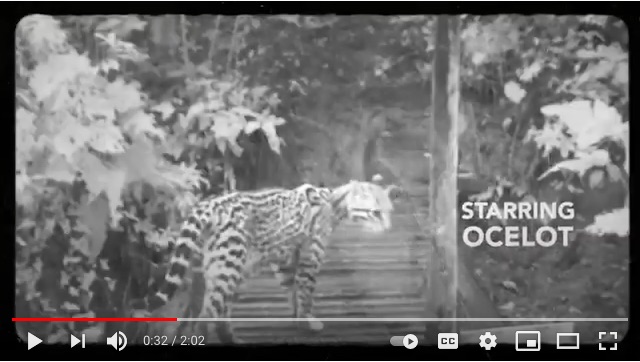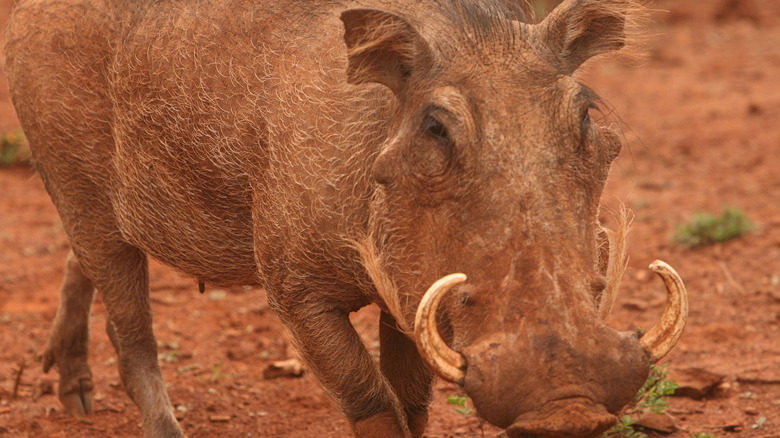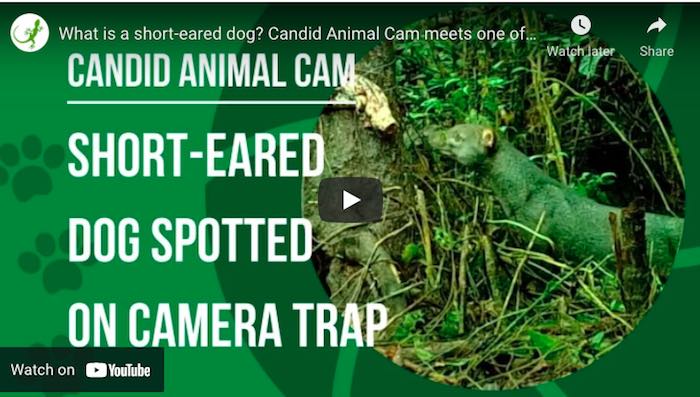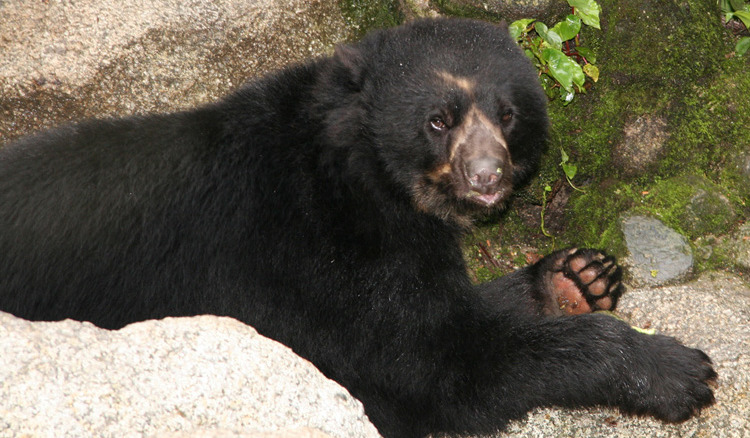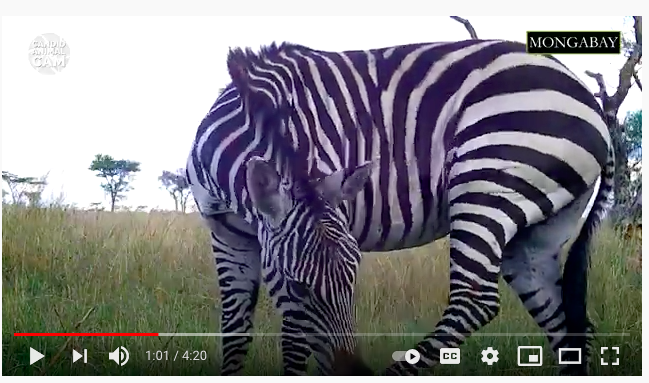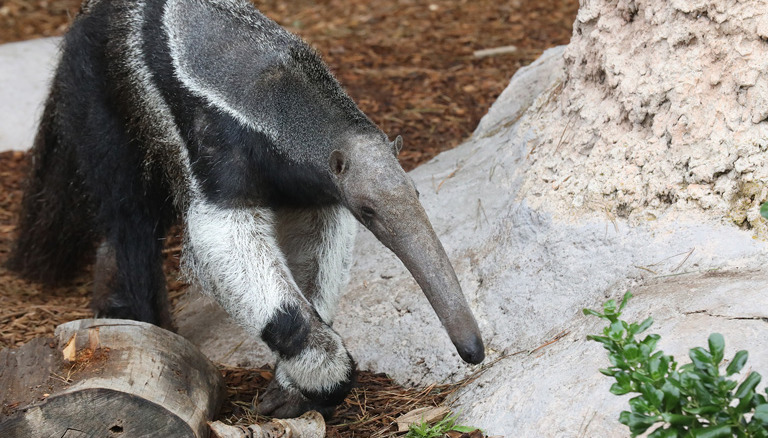Which animal has cube-shaped poo? This one!
Meet the common (bare-nosed) wombat:
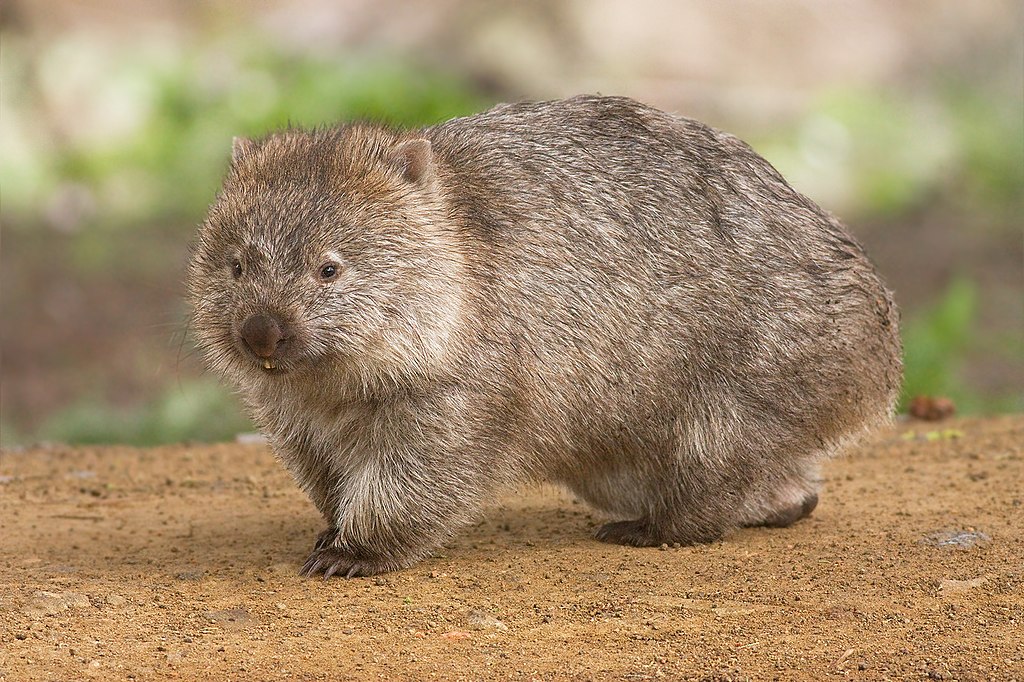
About wombats:
- Wombats live in Australia, a country located in Oceania in the Southern Hemisphere.
- There are three species of wombats in Australia: the common wombat (also called the bare-nosed wombat), the northern hairy-nosed wombat, and the southern hairy-nosed wombat.
- Wombats are one of the world’s largest burrowing animals, at approximately 3 feet (1 meter) in length.
- Their burrow systems can be up to 100 feet (30 meters) long. They dig their burrows with their front teeth and powerful claws.
- A wombat’s teeth continue to grow throughout its life.
- Female wombats can be slightly larger than same-aged males.
- A baby wombat is called a joey.
- The joey spends its first five months in its mother’s pouch.
- Wombats have a backward-facing pouch, unlike kangaroos, which have a pouch that faces forward or up. The backward-facing pouch protects the wombat joey from soil when its mother is digging.
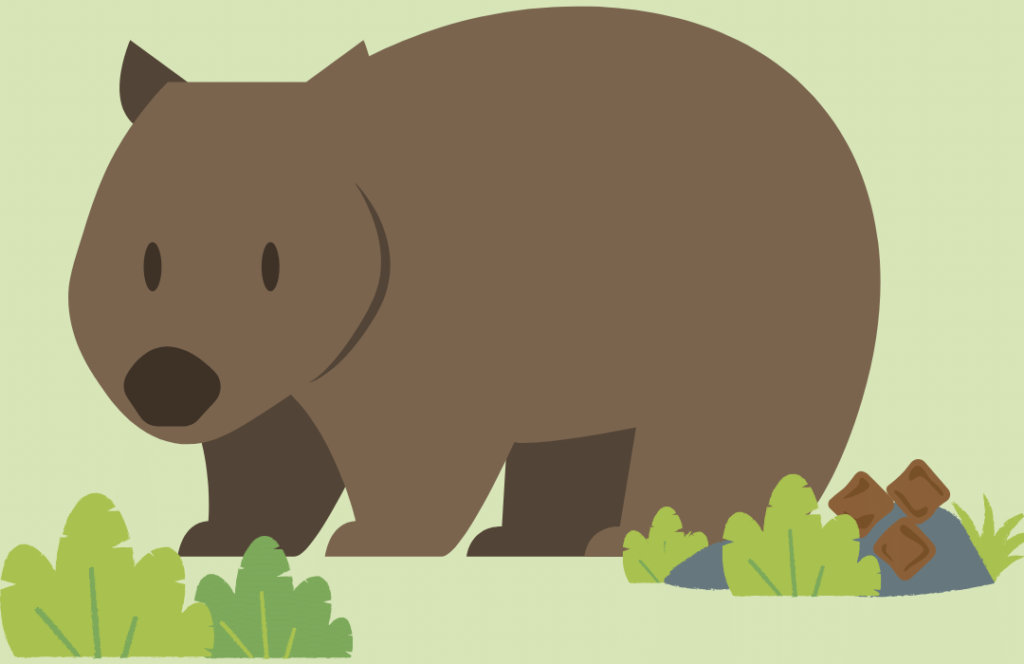
- Wombat poo is interesting – the pieces are cubed, not round!
- Wombats usually poo on slightly raised places like stones, sticks, or clumps of grass.
- They use their poo to mark territories and attract mates. One hypothesis (or idea) for why wombat poo is cube-shaped is that this shape makes the poo less likely to roll away.
A piece of wombat poo:
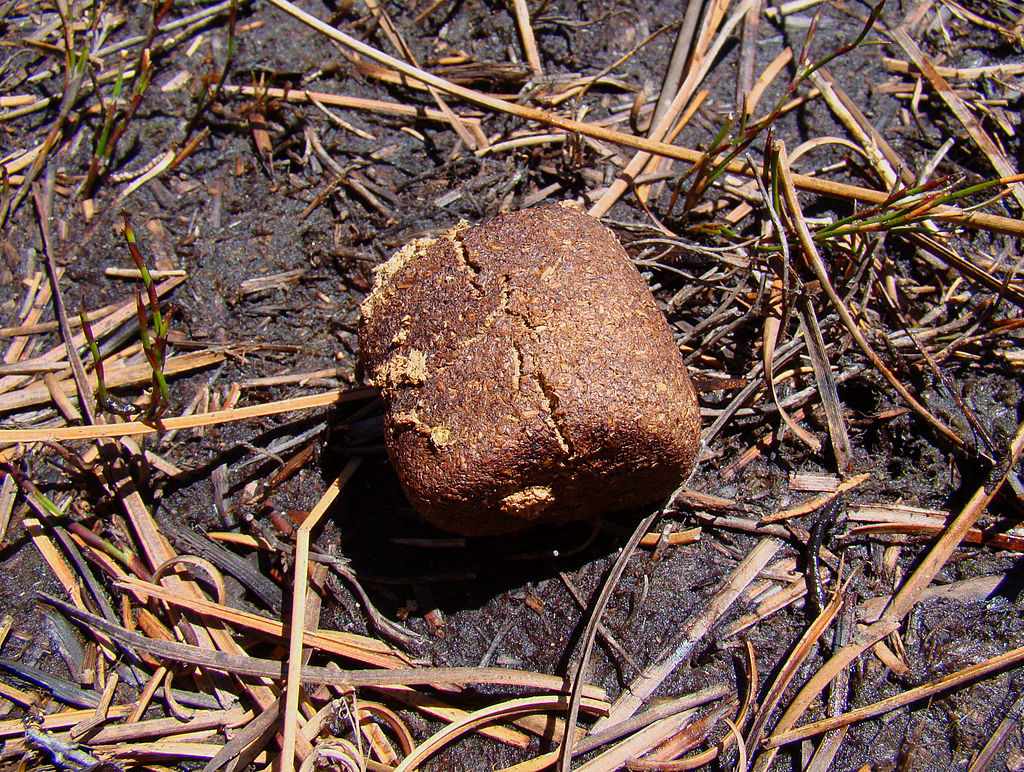
Glossary:
| wombat | A short, stocky burrowing marsupial native to Australia. |
| marsupial | A group of mammals that are born at an early stage of development and then typically continue to grow in a pouch. Members of this group include kangaroos and wallabies, possums, and wombats. Most marsupials live in Australia but some live in South America and there is one marsupial (the Virginia opossum) living in North America. |
| pouch | A pocket-like body part found on female marsupials that is where the young baby is nourished (fed) and protected (safe and warm) after being born. |
| burrow | An underground dwelling (or home) dug by an animal. |
| territory | An area defended by an animal or group of animals. |
| mate | A breeding partner. |
The poo shape experiment
Create your own wombat poo out of scrunched-up paper, playdough, clay, or modeling clay. Make two types of poo: round-shaped poo and cube-shaped poo. Now, have some fun! Place the two types of poo on a flat surface. What happens to the poo? Now, place the two types of poo on a raised or rounded surface (for example, a log, an upside down bowl, or a rock).
What did you find? (In science, these are called your findings or results.)
What happened on the flat surface? What happened on the rounded surface? Did one type of poo roll off the rounded surface more easily?
Wombats use poo to send important messages to other wombats. Scientists think that poo that remains in place might make a more effective wombat phone!
What have you learned about wombats?
- Why is wombat poo cube-shaped, according to researchers?
- What is a group of wombats called?
- Name two physical features that help wombats burrow underground.
- Name two predators of the wombat and describe how wombats defend themselves against these predators.
En Español:
Lee más aquí: https://es.mongabay.com/2020/11/video…
Read more about this story on Mongabay.com:
https://news.mongabay.com/2020/10/why-do-wombats-poop-cubes-candid-animal-cam-is-in-australia/
More resources about wombats:
Australian museum: learn about the bare-nosed wombat
Watch more episodes of Candid Animal Cam


